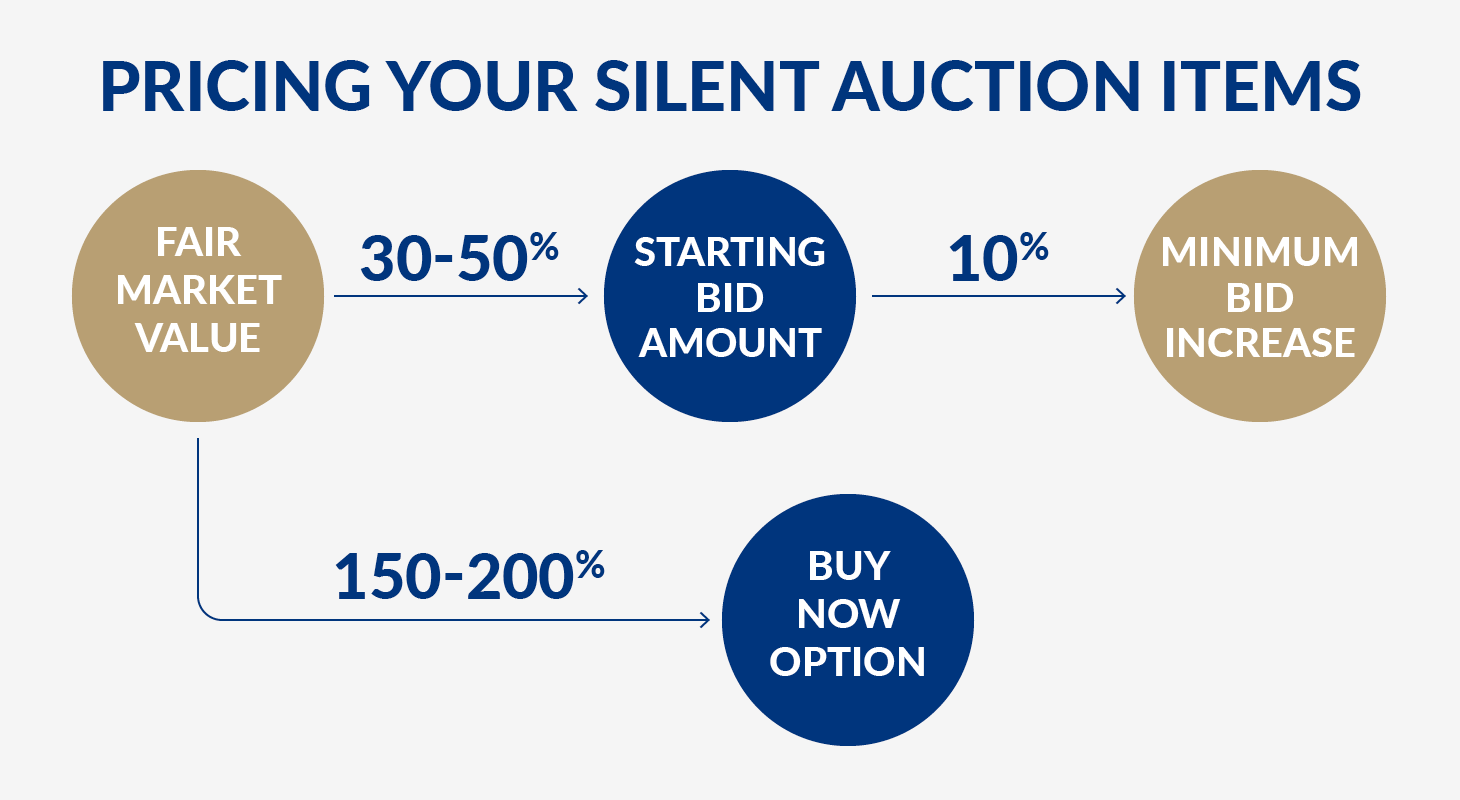
If your nonprofit has been fundraising for some time, you’ve likely hosted (or at least considered hosting) a silent auction—and for good reason. Silent auctions are incredibly flexible in terms of their format and fundraising potential. They can take place in-person or virtually and be paired with various other fundraisers, from galas to golf tournaments.
Most importantly, you can adapt your auction item list to align with your supporters’ specific interests. However, you’ll need to design solid bid sheets to get participants excited to bid on these items and make your event run smoothly through effective data collection.
To help you take your nonprofit’s silent auction bid sheets to the next level, this guide will review four best practices for creating them. As you implement these tips, remember that you may need to adapt them slightly based on whether you’re creating paper bid sheets or using a mobile bidding tool. Let’s dive in!
1. Incorporate Your Nonprofit’s Branding
Branding makes your organization recognizable and memorable for supporters, educating them on your mission and building trust. If participants in your silent auction see elements of your nonprofit’s brand on every bid sheet, it’ll reassure them that their contributions will go toward a good cause, which can encourage them to bid more. Branded bid sheets also look more professional, and therefore more credible.
Incorporate the following brand aspects into your mobile bidding software or paper bid sheet template:
- Logo. According to Loop, your nonprofit’s logo “translates your mission, vision, and values into a graphic that encapsulates who you are [as an organization].” Place your logo at the top of each bid sheet so it’s the first thing supporters see and recognize.
- Mission information. If your nonprofit’s mission statement is concise, you could copy it directly onto your bid sheets. If it’s longer than a sentence or two, write a short blurb about the cause your auction will support instead. For example, an animal shelter could say, “All proceeds from this silent auction will go toward expanding our facilities so we can care for more dogs and cats in need in our community.”
- Consistent colors and fonts. Use a color scheme that matches your logo and the same typefaces your organization uses in its other marketing materials while ensuring your bid sheets are legible and have adequate color contrast. If you’re leveraging mobile bidding, look for customizable software that allows you to change these aspects of the interface.
Additionally, include pictures on your bid sheets or accompanying display sheets at an in-person auction. These photos can either be of the physical items or something related to an experiential prize, such as a window card for a concert you’re auctioning off tickets to. Doing so gives supporters a better idea of what they’re bidding on, especially if they’re participating virtually.
2. Write Detailed Item Descriptions
Along with the images on your bid sheets, well-written item descriptions give supporters a clear picture of what they’re bidding on. More than that, these blurbs can pique participants’ interest and get them excited about winning each prize.
In each item description, make sure to include:
- A catchy title. If you were in your supporters’ shoes, which would you be more likely to bid on: the “Trip to Northern Italy” or the “Tuscany Culinary Escape”? Give each prize a creative name that grabs supporters’ attention and encapsulates what sets it apart.
- Everything the winning bidder will receive. Especially for bundled items like gift baskets or vacation packages, listing out this information helps supporters understand what is included in each prize and better estimate its overall value. This way, supporters will take home everything they won after the auction so they get what they paid for.
- Any restrictions on the item’s use. If a gift certificate expires or a vacation is scheduled for specific dates, auction participants should know up front to make an informed decision about bidding. This makes it more likely that winning bidders will actually be able to use their prizes.
Although your descriptions should be thorough, they also need to be easy for supporters to skim as they browse your wide selection of auction items. Keep paragraphs short, use bullet points where possible, and write as concisely as you can while still including all necessary information.
3. Acknowledge Your Event Sponsors
Getting an item for free or at a reduced price will maximize the revenue you can earn by selling it at auction. One of the best ways to do this is by securing corporate sponsorships for your event and requesting in-kind contributions from your partners.
Many large companies sponsor nonprofit events as part of their corporate philanthropy efforts, and smaller businesses may also be willing to partner with your organization to positively impact their community. Consider what companies your nonprofit has existing relationships with and which local businesses could contribute your most-wanted auction items when brainstorming your list of potential sponsors.
In return for providing an auction item, the business will typically receive free publicity from your nonprofit. Adding an acknowledgment section to the bid sheet for each donated item that includes the sponsor’s logo and a note saying, “This item was contributed by [business name and brief description],” advertises your nonprofit’s corporate partners and thanks them for their support.
4. Make Pricing Information Clear
When creating the section of your bid sheet where supporters will actually input their bids, it’s crucial to balance maximizing your potential revenue with ensuring a positive experience for participants through fair pricing. As Winspire’s auction item pricing guide explains, there are four key numbers you need to consider as you create your pricing strategy for each item:
- Fair Market Value (FMV). This is the price someone would pay for an auction item if they purchased it on the open market. Some prizes are more straightforward to value than others, so research online and consult the item’s provider if you have trouble.
- Starting bid amount. Supporters often appreciate getting items at a discounted price at auction, so set your starting bid amounts at 30-50% of each prize’s FMV. The more unique the prize, the higher the starting bid amount should be within that range.
- Minimum bid increase. This number should be no more than 10% of the starting bid amount to make it easy for supporters to increase their bids throughout the event and encourage bidding wars.
- “Buy Now” option. You can include an option on your bid sheets for eager supporters to automatically win some prizes by paying 100% to 150% of their FMV. While this can help your nonprofit bring in more funding, it’s less engaging for auction participants than starting a bidding war would be, so save this option just for your most valuable items.
Let’s say your nonprofit has secured two front-row seats at a concert with a total FMV of $1,000. A good starting bid amount would be $400 with a minimum bid increase of $40, and a supporter would pay between $1,000 and $1,500 if they chose the “Buy Now” option.
Bid sheets are more than just a data collection tool. They help your nonprofit advertise your auction items, engage participants, maximize your fundraising revenue, and thank your sponsors. Before your next silent auction, spend some time working with your fundraising event software or taking stock of your graphic design resources so you can create the best possible bid sheets for your organization.
